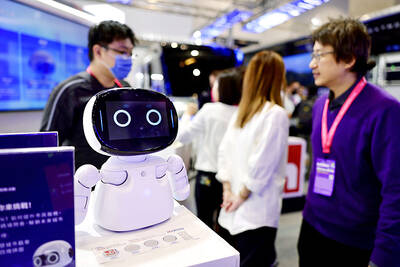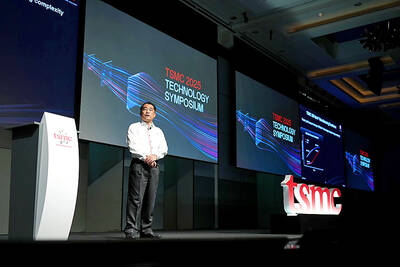When the atom bomb “Fat Boy” devastated Nagasaki 65 years ago today, one of the buildings reduced to rubble was the city’s Urakami Cathedral — then among the largest churches in Asia.
The blinding nuclear flash that claimed more than 70,000 lives in the city also, in an instant, blew out the stained glass windows of the church, toppled its walls, burnt its altar and melted its iron bell.
However, in what local Christian followers have likened to a miracle, the head of a wooden Virgin Mary statue survived amid the collapsed columns and scorched debris of the Romanesque church flattened on Aug. 9, 1945.
The appearance of the war-ravaged religious icon is haunting. The Madonna’s eyes have become scorched, black hollows, the right cheek is charred, and a crack runs like a streaking tear down her face.
“When I first saw [the damaged statue], I thought the Virgin Mary was crying,” said Shigemi Fukahori, a 79-year-old parishioner at the church who remembers the statue before the explosion that destroyed the cathedral that is called St Mary’s in English.
“I thought it’s as if the Virgin Mary is telling us about the misery of war by sacrificing herself,” Fukahori said, quietly gazing at the statue. “This is a significant symbol of peace, which should be preserved forever.”
The remains of the statue of the Virgin Mary have found a new home inside a rebuilt church, also called St Mary’s, built on the same site, only 500m from the bomb’s ground zero.
However, the powerful relic has also traveled widely as a symbol of peace — most recently to New York for a UN nuclear disarmament conference in May, when it was also taken to a mass at the city’s St Patrick’s Cathedral.
UN Secretary-General Ban Ki-moon, who saw the statue in the US city, visited Nagasaki to be reunited with it on Thursday before attending a peace memorial ceremony in Hiroshima.
On their way to New York, the Nagasaki religious leaders carried the statue to the Vatican, where it was blessed by Pope Benedict XVI, and to a ceremony in Guernica, Spain, to mourn the victims of Nazi air attacks during the Spanish Civil War.
“We traveled overseas with the statue, with the idea that we would like to ask the Virgin Mary to act for peace,” Joseph Mitsuaki Takami, the archbishop of Nagasaki, said in an interview. “There are many ways to make such an appeal — through pictures, film or narratives about the horror — but the atomic-bombed Mary appears to have a different power to tell us about it.”
Nagasaki, a southwestern port city, was Japan’s sole gateway to the outside world during much of the Edo era (1603 to 1868) when the country retreated into self-imposed isolation.
The Edo era’s Tokugawa Shogunate imposed anti-Christian edicts in the early 17th century, oppressing Christians and banishing European priests.
Some believers were martyred and others secretly maintained their creed as “hidden Christians” for more than 200 years until Japan reopened under the Meiji era that began in the late 19th century.
Some 8,500 local Christians were killed in the Nagasaki bombing.
Brother Thomas Ozaki Tagawa, speaking for other local Christians, said many were puzzled by why the US attacked Nagasaki, Japan’s largest Christian community.
While many of the survivors try to see the tragedy as a tribulation handed to them by God, their agonies are still rooted deeply in their minds.
“I was too sad to cry because it was simply too merciless,” said Fukahori, who survived inside a Nagasaki factory when the mushroom cloud rose.
“Many survivors are still suffering the after-effects of the radiation,” Fukahori said. “All I can do is to pray for them. I hope Nagasaki will be the last place ever to fall victim to an atomic bomb.”
Many Americans believe the bombs were necessary to bring a quick end to the war and avoid a bloody land invasion, but the archbishop disagrees.
“Japan killed millions in Asia, but that doesn’t mean dropping atomic bombs is justified,” he said. “Possessing nuclear weapons in itself is a sin.”
Mayor Tomihisa Taue said: “People simply need to use the power of their imagination and consider how it would be if this happened to their family or friends. You can easily imagine that when you visit Nagasaki or Hiroshima.”

DEMOGRAPHICS: Robotics is the most promising answer to looming labor woes, the long-term care system and national contingency response, an official said Taiwan is to launch a five-year plan to boost the robotics industry in a bid to address labor shortages stemming from a declining and aging population, the Executive Yuan said yesterday. The government approved the initiative, dubbed the Smart Robotics Industry Promotion Plan, via executive order, senior officials told a post-Cabinet meeting news conference in Taipei. Taiwan’s population decline would strain the economy and the nation’s ability to care for vulnerable and elderly people, said Peter Hong (洪樂文), who heads the National Science and Technology Council’s (NSTC) Department of Engineering and Technologies. Projections show that the proportion of Taiwanese 65 or older would

Nvidia Corp yesterday unveiled its new high-speed interconnect technology, NVLink Fusion, with Taiwanese application-specific IC (ASIC) designers Alchip Technologies Ltd (世芯) and MediaTek Inc (聯發科) among the first to adopt the technology to help build semi-custom artificial intelligence (AI) infrastructure for hyperscalers. Nvidia has opened its technology to outside users, as hyperscalers and cloud service providers are building their own cost-effective AI chips, or accelerators, used in AI servers by leveraging ASIC firms’ designing capabilities to reduce their dependence on Nvidia. Previously, NVLink technology was only available for Nvidia’s own AI platform. “NVLink Fusion opens Nvidia’s AI platform and rich ecosystem for

Taiwan Semiconductor Manufacturing Co (TSMC, 台積電) yesterday said it is building nine new advanced wafer manufacturing and packaging factories this year, accelerating its expansion amid strong demand for high-performance computing (HPC) and artificial intelligence (AI) applications. The chipmaker built on average five factories per year from 2021 to last year and three from 2017 to 2020, TSMC vice president of advanced technology and mask engineering T.S. Chang (張宗生) said at the company’s annual technology symposium in Hsinchu City. “We are quickening our pace even faster in 2025. We plan to build nine new factories, including eight wafer fabrication plants and one advanced

‘WORLD’S LOSS’: Taiwan’s exclusion robs the world of the benefits it could get from one of the foremost practitioners of disease prevention and public health, Minister Chiu said Taiwan should be allowed to join the World Health Assembly (WHA) as an irreplaceable contributor to global health and disease prevention efforts, Minister of Foreign Affairs Lin Chia-lung (林佳龍) said yesterday. He made the comment at a news conference in Taipei, hours before a Taiwanese delegation was to depart for Geneva, Switzerland, seeking to meet with foreign representatives for a bilateral meeting on the sidelines of the WHA, the WHO’s annual decisionmaking meeting, which would be held from Monday next week to May 27. As of yesterday, Taiwan had yet to receive an invitation. Taiwan has much to offer to the international community’s